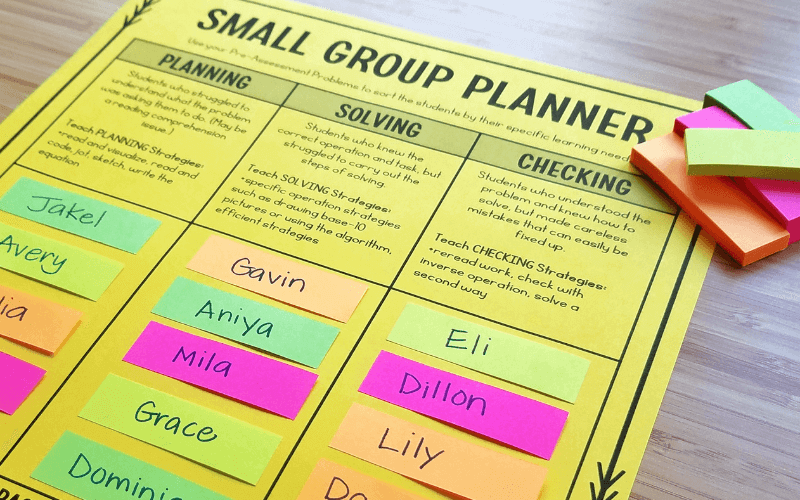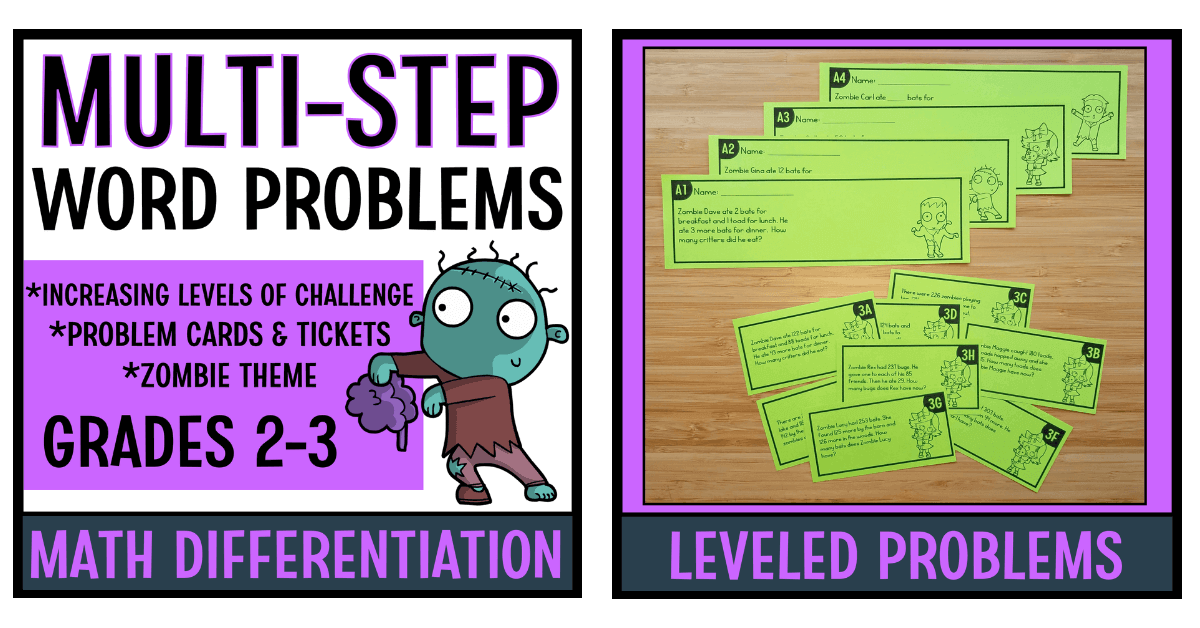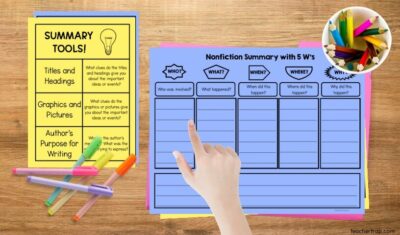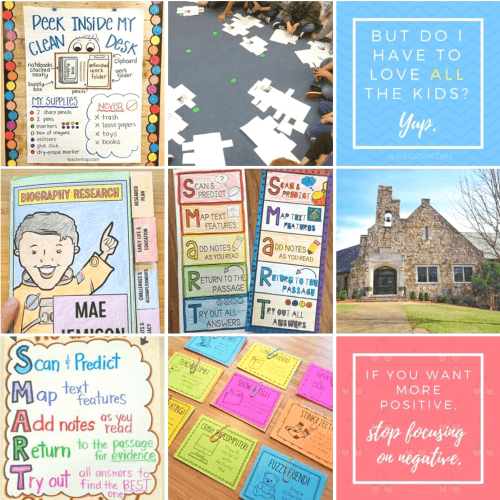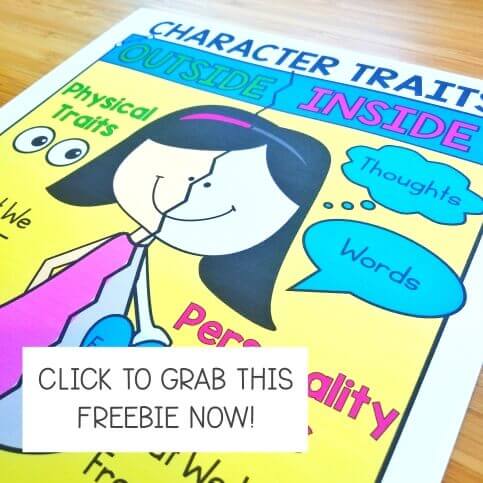Of all the tricky word problems, multi-step problems cause my students the most trouble. They get confused about the order of events, the operations needed to solve, and the computation of multiple numbers. In this post, I’m sharing the four simple steps for helping students master multi-step word problems.

Step 1: Read and Visualize
The first thing we do with a multi-step word problem is read it slowly and visualize what is happening. This first step is about using our good reading comprehension strategies.
I ask students to close their eyes and imagine the events as they take place.
Julie had 82 stickers.
Imagine a girl with some stickers. Maybe they’re all in a box. See her holding the box in her hands.
Her aunt gave her 26 more stickers.
Can you see her aunt handing her more stickers? Julie adds those to her box now. What operation would match that action?
Then Julie let her brother pick out 12 stickers to keep.
Imagine her little brother coming over and taking 12 out of the box. Will Julie have more or fewer stickers now? What operation matches that step?
How many stickers does Julie have?
Imagine her holding the box of stickers. How many are in there now?
We practice this type of visualizing over and over again until students begin to naturally visualize every time they read a word problem. This is SO important! Especially with multi-step word problems, you can’t just grab numbers and start working with them without carefully thinking through the operations needed.
During this step, you might also consider leaving out the numbers. You can say, “Julie had some stickers. Her aunt gave her some more. Her brother picked out some to keep.” This can help students focus on the events rather than trying to solve!
Step 1 (Part 2): Act it Out
I like to have students visualize first so that each child has to do the thinking work on their own. Visualizing is an important strategy for independent problem solving.
But when we’re working together as a whole class, it’s helpful to make sure everyone is on the same page and was able to visualize the situation correctly. That’s why we also physically act out multi-step word problems.
We act out the problems with simple gestures that show if we are giving away (losing, eating, using up, etc.) things or if we are gaining more of something. Incorporating movement helps many students make sense of tricky problems.
Sometimes, I’ll ask for a few volunteers to act out the problem in front of the classroom, and sometimes we’ll all just do it together from our spots.
Again, it’s often helpful to leave out the numbers. Our goal is to give meaning to what is happening in the problem and relate each action to its matching operation, not to start solving.
Step 2: Write an Answer Statement First
Once students have made sense of the problem, it’s helpful to have them write an Answer Statement. The Answer Statement can help students determine and remember what the problem is asking them to find out.
For example:
Julie has ___ stickers now.
This helps students remember that we are trying to determine how many stickers Julie has after the events of the problem. It also ensures that students actually READ the question!
After students solve the problem, they can place their answer in the statement and check if it makes sense.
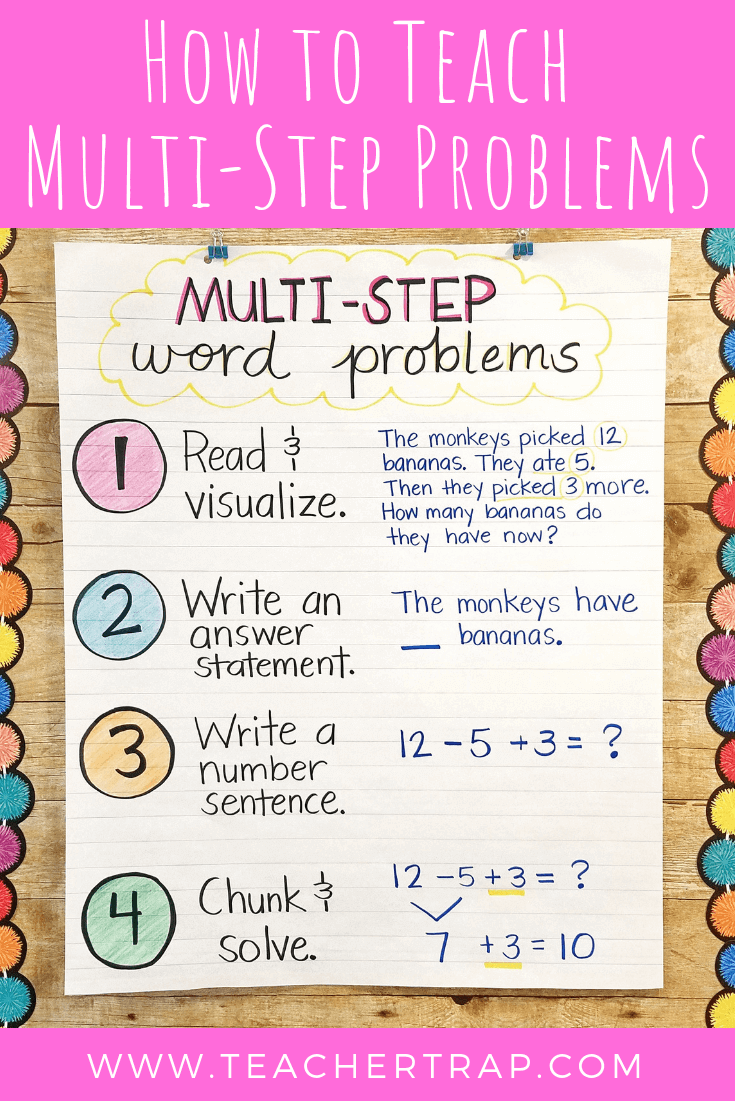
Step 3: Write the Full Equation
One of the challenges of multi-step word problems is that students often solve one part but forget or miss the next step. I find that it’s helpful to have them write the entire equation, including all the steps, before trying to solve any of the parts.
From the earlier example, students would write:
82 + 26 -12 = ?
After they have written the equation, I like to look back at it and talk out how it matches the story problem.
Julie started with 82 stickers. Her aunt gave her 26 more, so we need to add 26. Then her brother took 12, so we need to subtract 12.
Now students can see all of the events represented in one equation and will be less likely to forget a step.
Step 4: Chunk the Parts
Now that students know the parts, I ask them to look at the equation and determine a plan for solving. In many cases, this simply means to complete the first part (86 + 26 = A) and then use that answer to complete the second part. (A – 12 = ?)
In some cases, students may notice an easier way to work with the numbers and reorder the steps.
For example:
125 + 52 – 25 = ?
Some students may see that they can simply take the 25 from 125 first and end up with 100, which is then easy to add to 52.
Another example:
42 – 18 + 7 = ?
Some students may realize they can avoid regrouping by first adding 7 to 42 and then subtracting the 18.
When students know all the steps, they are able to think about smarter ways to complete the task.
Handy Tools for Multi-Step Word Problems
I find that the key to teaching multi-step word problems is starting with a simplified version of the problem and working up to the more challenging ones.
My favorite way to do this is to use Tiered Word Problems. These are leveled word problems that slowly increase in challenge from the first grade level on up.
Since multi-step word problems can be scary, I decided to use a zombie theme for the pack. (Plus, my students love zombies!) This pack includes leveled problems that allow me to differentiate instruction and gradually increase the challenge.
Although the pack is targeted to 2nd and 3rd graders, it’s perfect for challenging younger students or intervening when older students aren’t quite catching on.
You can check out the Multi-Step Word Problems Zombie Pack in my TPT store.
I hope these tips make your teaching life a little easier! What strategies help your students make sense of multi-step problems? Comment below!







